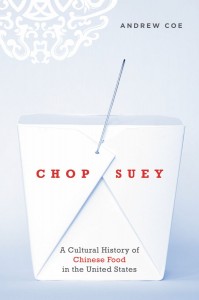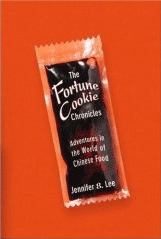« Satellite Kids, a Chinese Restaurant By-Product | Home | Conan O’Brien, Chinese Beer, American Food. »
Planting the Flag on Dim Sum
By Jennifer 8. Lee | July 27, 2009
This is a guest post by Andrew Coe, author of Chop Suey.

New Yorkers like to think we’re the first at everything in the culinary world. About 1977, we discovered dim sum. The setting was Hee Seung Fung (also known as H.S.F.), a spacious restaurant down on the Bowery. The city was then in the midst of one of its crazes for brunch, so anything we could eat in the late morning on weekends was tempting. We found that we loved H.S.F.’s vast variety of steamed, boiled, and fried dumplings, breads, and other dishes. Still, we weren’t sure exactly what “dim sum†meant. Was it “odds and ends†or “snacks†or “tea lunch� In any case, we happily wolfed them down, smug in our knowledge that once again we were on the culinary cutting edge.
Three decades later, at least our Chinese translation skills have improved. “Dim sum†literally means “dot heart,†an expression that roughly translates as “hits the spot.†In China, the dim sum describes the small dishes eaten while drinking mid-morning tea, particularly in the tea parlors that were popular from north to south. The dim sum tradition reached its most elaborate development in the South China city of Guangzhou, where chefs vied to see who could produce the widest assortment of delicious and creative tea snacks. Immigrants from the Pearl River Delta just south of Guangzhou brought dim sum to the United States, not in the 1970s but likely as early as the 1850s.
Chinese first came to the United States to make their fortune in the California Gold Rush. In 1849, they opened their first restaurants in San Francisco, selling both western and Chinese dishes to a motley crowd of miners. Soon, so many Chinese thronged San Francisco that they supported a couple of large Guangzhou-style restaurants serving just Chinese food. The first floor was the entrance and kitchen; the second was the dining room for lunch and, presumably, dim sum; and the banquet room occupied the third floor. White San Franciscans only rarely entered these eating houses, when invited to banquets with Chinese business partners or just on a dare–eating Chinese food was considered as rash as being shot out of a cannon. At these banquets, they sampled many kinds of sweet and savory Chinese cakes and afterward were proud to report, “we are all alive!â€
In the 1870s, Americans began to realize that the Chinese served a meal around tea. San Francisco’s Chinatown was by then a major tourist attraction. Local whites harbored deep prejudices against the Chinese, but when relatives from the East came to visit, they were forced to give them a tour. Even the locals had to admit that the Chinese served the best tea in the world. And with the tea came a little tray of food: “squares of white cake, with a white glazing covered with red characters, olives, salted almonds, candied water-melon, little white cheeses, several sorts of dark and dubious-looking sweetmeats, and a good many unnamed and uninviting compounds of a gelatinous and saccharine nature.†[“California. A Pleasure Trip from Gotham to the Golden Gate. (April, May, June, 1877),†Mrs. Frank Leslie, New York, 1877, pp. 170-1]
Whites soon learned to avoid the savory pastries–one was described as a “tidbit from the tomb‖and concentrate on the candied fruits. The Chinese dim sum lunch became English tea, enjoyed in a more exotic setting.
From the mid-1870s on, thousands of Chinese fled racial violence and discrimination in the West for the big cities of the East. Wherever they built their Chinatowns, they also served dim sum. The few whites who noticed the meal weren’t sure what to make of it. The journalist who in 1894 sampled a “tem sem†lunch at Moy Sam’s in Washington, D.C. called it a “dinner in disguise,†because all the meat was hidden inside elaborate dough casings. That was too weird for native tastes; whites preferred a dish that they’d just discovered called chop suey that hit their tastes exactly. The chop suey craze spread across the country steamrolled anything that wasn’t bland, overcooked, and innocuous in Chinese food. Before it was really even discovered, dim sum went underground.
After World War II, Americans slowly became more interested in Chinese food beyond chop suey. Immigrant chefs from the Mainland and Hong Kong revived restaurant kitchens, and the New York Times’s Craig Claiborne and New York Magazine’s “Underground Gourmet†began to realize the joys of Chinese regional cuisine. They grappled with this thing called “dim sum,†“dem som,†or “dem sem.†Then thanks to the fads for brunch and new kinds of Chinese food, suddenly there was Jackie Onassis at H.S.F., competing for shrimp dumplings and steamed pork buns. The Chinese, of course, had been eating dim sum as long as there had been a Chinatown.
Topics: Chinese Food | No Comments »
Comments are closed.


